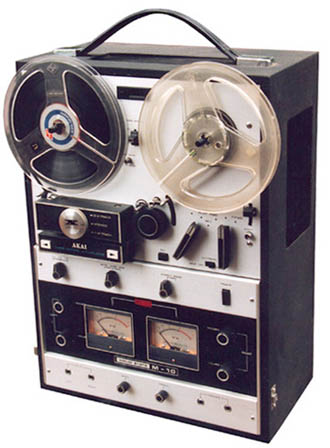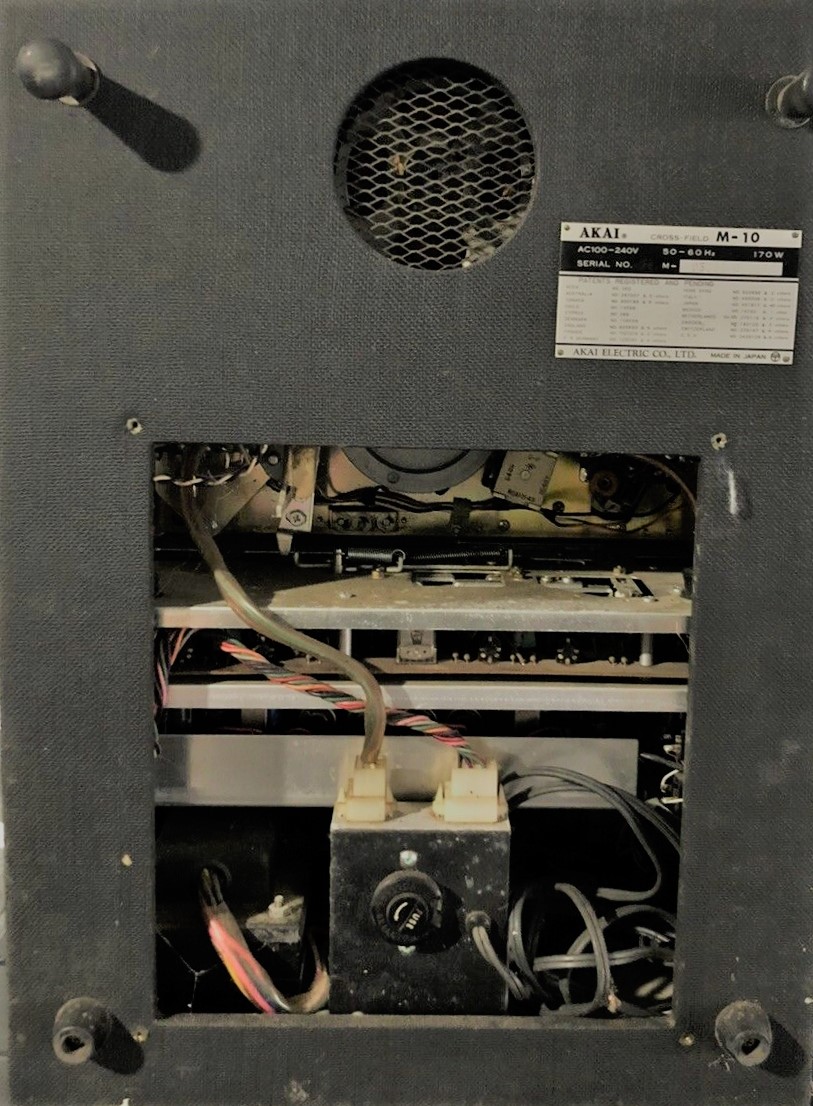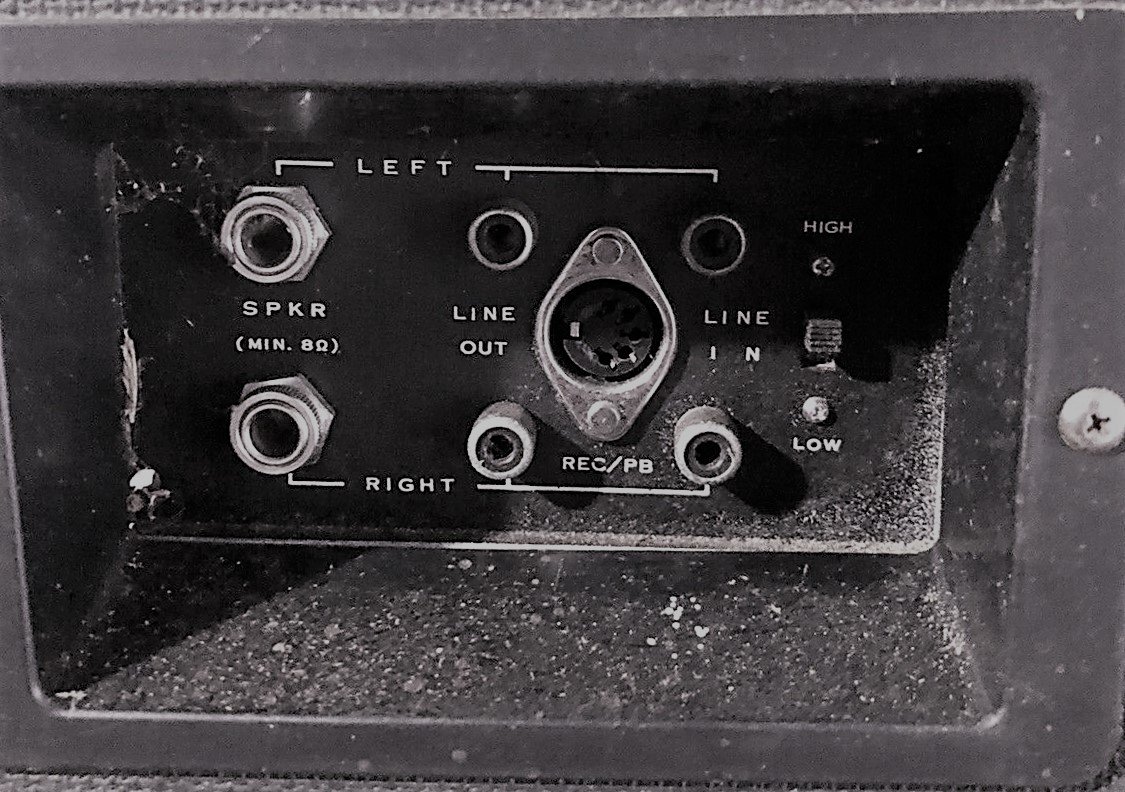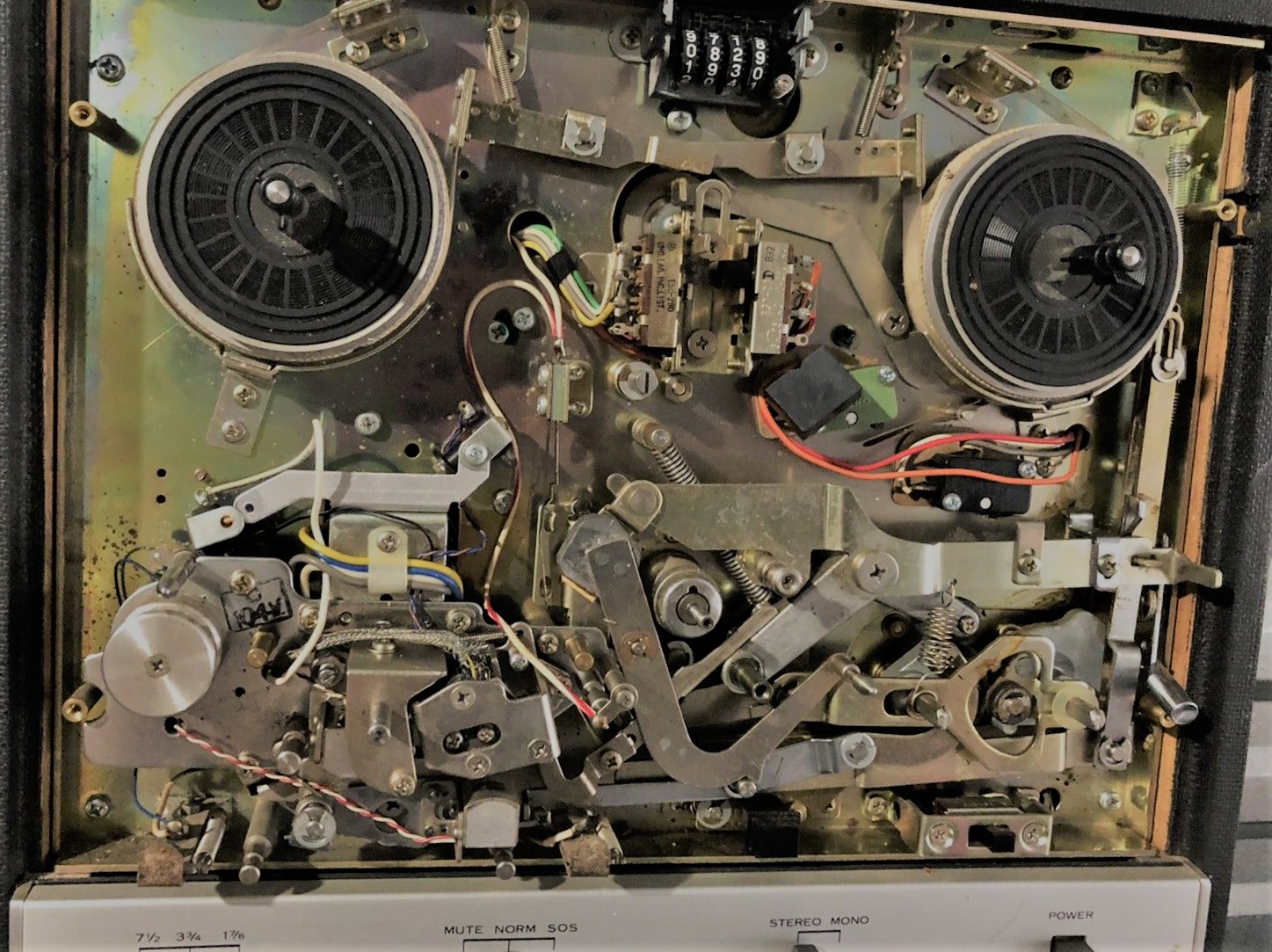Technical Details
Brand: Akai
Model:M-10
Category:Mid High Fidelity
Application:Consumer
Electronics:Solid State
Equalization:NAB
Country of Manufacture:Japan
Tracks:1/4 Rec/PB
Speeds: 1 7/8, 3 3/4, 7 1/2
Max Reel Size("): 7"
Number of heads: 3
Dimension: 13¾ x 18¾ x 9½ " (350 x 474 x 242 mm)
Head Composition: Permalloy
Head Configuration: Stereo
# Motors: 3
Auto Reverse?:Yes
Voltage(s): 110-120v
Outputs: RCA
Frequency Response:(3dB): 7½ ips: 30Hz - 26kHz
Wow and Flutter:0.08 % at 7½ ips, <0.12% at 3¾ ips, <0.2% at 1 ips
Signal-to-Noise Ratio:better than 50dB
Sound quality rating:6 / 10
Long-term reliability rating: 7/ 10
Weight: 48.4 lbs (22 kg)
Additional Details
Description
The Akai M10 is a stereo quarter-track totally solid-state tape recorder with three motors, three playing speeds and a maximum reel size of 7″.
It was the last “M” in the series which had begun back in 1962 with the M6.
The patented Akai “Crossfield biasing” was used where the system lays down the recording bias signal using a separate head that rides on the back side of the tape. It works well with older tape formulas like Scotch 201 / 202 / 203 , Ampex 641 or BASF LP35 but it’s not ideal for modern back coated formulas. Note that you can’t monitor a recording with the M 10 as it’s not a true 3 head deck.
The M10 is an auto reverse machine for playback, but while recording it is necessary to switch the reels.
Other features included input mixing (line and microphone) and a stereo headphone socket.
Speed change was entirely electrically switched, gone was the cumbersome sleeve change of the earlier M-series.
Two internal power amplifiers gave a hefty 8 watts RMS per channel that can power a pair of smaller speakers fairly well and can be used as “stand alone” unit without an external amp. The small built in speakers should only be used for “monitoring” the input signal and not for listening, as Akai stated in the manual.
(Sold in the USA as the Roberts 800X)
Additional Info
Heads
Three (erase, record/play and Crossfield bias)
Motors
One 3-speed hysteresis capstan motor, two outer rotor reel motors
Tape speeds
7½ , 3¾ & 1 7/8 ips
Frequency response (3dB)
7½ ips: 30Hz – 26kHz
3¾ ips: 30Hz – 19kHz
1 7/8 ips: 30Hz – 9kHz
Wow & flutter
0.08 % at 7½ ips, <0.12% at 3¾ ips, <0.2% at 1 7/8 ips
Rewind speed: 75 seconds for 1,200 ft reel / Audio output power: 8 watts RMS per channel / Bias frequency: 100kHz / Inputs: mic 0.5 mV 27k. line 50mV 175K / Outputs: line 1.23V 100 ohms, DIN 0.4V 10k, headphones 8 ohms / Speaker(s): two 4″ x 6″ internal speakers / Dimensions: 13¾ x 18¾ x 9½ ” (350 x 474 x 242 mm) / Weight: 48.4 lbs (22 kg) / 1 x DIN, 4 x RCA, 2 x Speaker jacks
Akai also offered a different model of the same machine, the M-10L, which is a leather finished version of the M-10.
If you are considering buying an M 10
- Check that the amplifier works in both record and play, as it used a pair of very early integrated circuits , a Taiyo 6 pin zip that replaced a bunch of transistors, caps and resistors. Usually they are pretty reliable but you might get one that’s bad. It can be rebuilt using discrete components.
- Make sure the motor pulley is quiet as the belt passes over it, as it has been reported that this pulley can deteriorate- listen for a rhythmic thumping while the motor is running.
- Make sure it’s set for your voltage and Hz in the back and up front as the belt pulley changer needs to be in the correct position too
There don’t seem to be many of these available on eBay as a search for completed listings on November 21, 2020 revealed one that sold in the last 90 days at $750 but it was a new old stock mint condition deck.







